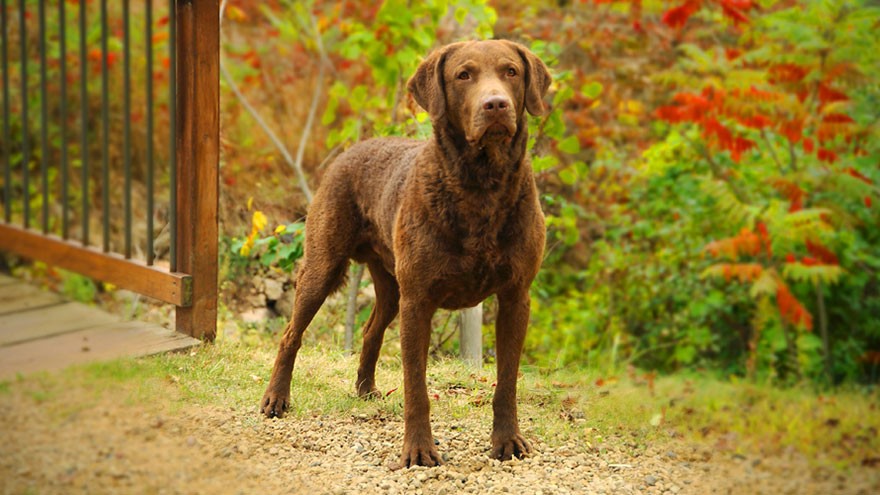Chesapeake Bay Retriever Breed Information
This hunting and sporting breed was first developed on the east coast of the United States. While the Chesapeake Bay Retriever has many advantages over other breeds, it is particularly suited to rough weather conditions and water, as it was used to retrieve game and guard the game as the load was taken to market.
The coat of the Chessie, as it is sometimes called, seems wavy and has an oily appearance, which is what makes it so waterproof.
Chesapeake Bay Retriever Breed Information
Nearly all Chesapeake Bay Retrievers have coats in one of three colors to include brown, in various shades, sedge, reddish yellow to chestnut; and faded tan to straw color. Then on occasion, you will see this breed with a small area of white on the breast, belly, or toes. This breed is the result of crossbreeding with Newfoundlands, setters, hounds, and other dogs, first being thought of as a distinct breed less than 200 years ago.
Generally, an alert and happy breed, the Chesapeake Bay Retriever is named for the bay of the same name that is surrounded by Virginia and Maryland. In addition, this breed is considered the smartest of all the retrievers but owners find that the breed is also a great companion, offering a quiet demeanor and a protective nature. Chesapeake Bay Retrievers will tolerate some rough play but will also move away when they have had enough human contact. This breed generally recognizes just one person as master, while treating others as equal or subordinate.

Owners find that the Chessie is a durable dog, and those who were true hunting and retrieving dogs often made long swims in cold water, against the tide, to retrieve game. The breed is generally of moderate size, with a deep, wide chest. Males can reach to 26 inches tall, while females are slightly smaller. For weight, males will reach as much as 80 pounds with the females between 65 and 75 pounds.
When the Chesapeake Bay Retriever moves, it is with a smooth and seemingly effortless gait, although the dog is really rather powerful. As many breeders and Chesapeake owners will say, getting a retriever because of size and beauty is the wrong reason. Keep in mind that this breed is not related to Golden Retrievers or Labrador Retrievers, having a somewhat different temperament. Even so, the Chesapeake Bay Retriever is intensely loyal, protective, and even sensitive.
Keeping a Chesapeake Bay Retriever as a family pet can be an enjoyable experience but they do not thrive when tied outside or kept in a pen. This breed seems to bond strongly with new owners, even to the point of seeming indifferent to a person other than the master or at least indifferent to another family.
Chesapeake owners urge new owners not to encourage the dog to be aggressive because of the intensity of its protective nature. If you decide the Chesapeake is for you, be prepared to spend a fair amount of time each day playing or working with them. Some trainers say a minimum of 20 minutes each day is necessary.
One of the truths about Chessies is that they will probably get along with cats that are already in your household, but will chase other cats. This intense loyalty to you and yours can mean that the Chesapeake is not for an inexperienced dog owner, one able to exert authority and make it clear who is boss.
However, if the Chesapeake is for you, remember that this breed can be both aggressive and very loyal. Without doubt, this breed makes a great pet if properly socialized.
You Might Also Like :: What are Boxer Dog Allergies?

